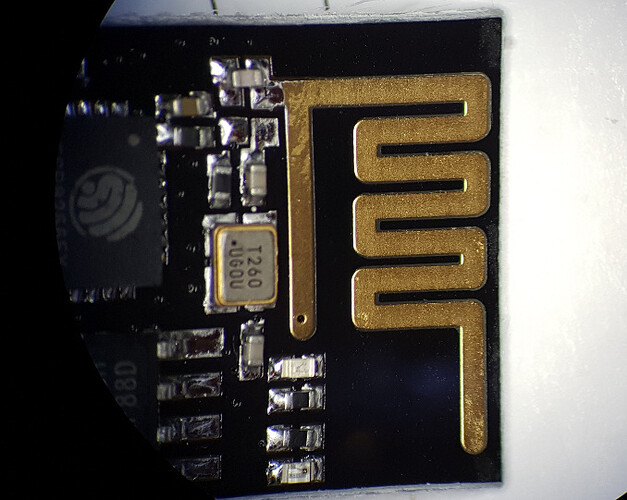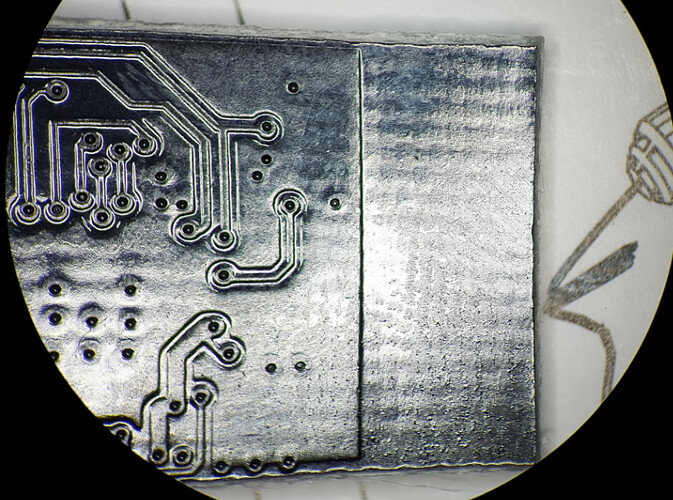Howdy!
I was watching this video from one of my favourite makers on YouTube when I came across the following point in the video:
It looks like an ESP8266 but it’s not. It’s an NRF24L01 module, which is a 2.4 GHz communications module. Nevertheless, 2.4 GHz is 2.4 GHz, and this thing has antenna wires soldered onto it!
I’ve had problems with the WiFi range on the ESP8266. I’ve seen at least three distinct PCB antenna types. I’ve not been able to find anyone else making reference to these different types and how they perform, so here is my own anecdotal evidence.
In descending order of performance: Most sensitive, Bad, Awful.
The design to the left seems best by far. It also appears to have nearly twice the active area on the circuit board.
But, here’s the fun part. It never occured to me that I could simply cut the circuit board traces and solder my own wires on there as antennas!
I’ve done it and literally seen 10 dB signal improvement. Every 3dB is equivalent to a doubling of power, so 10dB is actually ten times the effective power. Marginal locations suddenly work flawlessly.
At first I used CAT5 networking wire strands, then once I examined it under the microscope and found that it looked like I had soldered freaking timber logs to the circuit board, I realized that 30 AWG wire-wrapping wire would be a better fit.
Here are some microscope photos of the process of modifying an ESP-01. Please note that I’m a novice at this, still learning the tools, so it’s not pretty.. but it works like a charm.
Unmodified front:
Unmodified rear:
After some butchering with a utility knife:
58mm 30 AWG wires soldered on:
In the case of a NodeMCU board, which have the ESP-12 module directly mounted, there’s no easy access to the rear for the ground plane wire. In those cases, I’ve found that adding just an antenna wire without adding a ground wire is still worthwhile and did improve reception for me.
I used this online antenna length calculator to arrive at 58 millimeters, based on an entered frequency of 2450 MHz.








